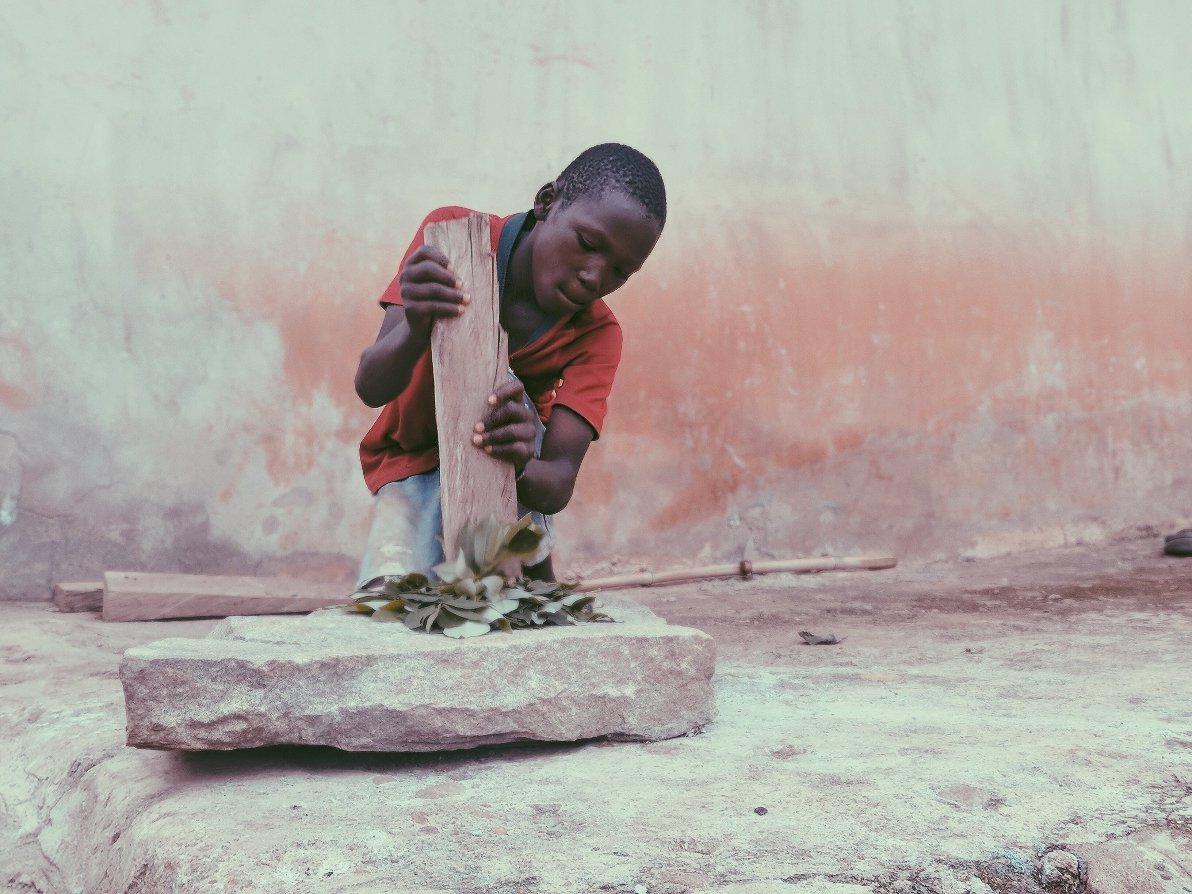There’s something undeniably enchanting about the idea that centuries ago, the boundaries between magic and medicine blurred so effortlessly. Imagine a cold, moonlit night in a medieval village. A woman, whispered about as a witch, leans over her bubbling cauldron—not to summon spirits, but to craft a healing balm for a child’s fever. Was it magic, or was it early science? The world is only just beginning to rediscover how many so-called witchcraft remedies were rooted in the practical wisdom of nature. Today, with science peeling back the layers of folklore, we find that beneath the superstitions, there often lay a surprisingly rational logic—one that helped people heal, survive, and sometimes, even thrive.
The Roots of Folk Magic: Survival and Tradition

Folk magic wasn’t just about casting spells or warding off evil spirits. For generations, it was a toolkit for survival. When formal medicine was expensive or simply unavailable, people turned to the knowledge passed down from mothers, grandmothers, and wise neighbors. Herbs picked under a full moon or a special prayer spoken over a poultice had meaning and purpose. The rituals made sense in a world filled with unknowns—they gave people hope and structure. These practices were less about supernatural power and more about harnessing the best knowledge people had at the time. As science now reveals, many of these remedies had a real effect, even if their users didn’t understand why.
Witchcraft or Wisdom? The Power of Plants
Plants were the backbone of folk magic, and for good reason. Before pharmacies, the fields and forests were the only medicine cabinets available. Willow bark, for instance, was chewed to ease pain—centuries before aspirin was synthesized from its active ingredient, salicin. Elderberry syrup, brewed to combat colds, now turns up in health stores everywhere. These so-called “witches” were often the only pharmacists in their communities, intuitively using botanicals that modern science is still studying. Their knowledge of plants was both broad and deep, blending observation, experimentation, and a little bit of superstition.
The Rituals: Why the Magic Mattered
It’s easy to scoff at the idea of chanting over a potion or burying a charm by the doorstep. But rituals served an important role. They gave people a sense of control when illness or disaster struck. Psychologically, rituals can reduce anxiety and boost confidence in a remedy, making the patient feel cared for and hopeful. Today, we recognize the placebo effect—a real, measurable phenomenon where belief in a treatment can improve health outcomes. In this way, the “magic” of folk healing was sometimes as important as the medicine itself.
Protective Amulets: Science Behind the Symbols

Amulets and charms were everywhere in witchcraft lore. From garlic necklaces to iron horseshoes, these objects weren’t just symbols—they had practical effects. Garlic, for example, has proven antimicrobial properties, and carrying it might have reduced infections. Iron, in some cases, really did repel certain pests or reduce the risk of tetanus from wounds. The objects acted as early forms of protection, combining superstition with subtle science. People may not have known the chemistry, but they noticed the results.
Healing Salves and Poultices: Early Biomedical Ingenuity
Salves and poultices were among the most common remedies in folk medicine. Mixing herbs with animal fat or honey, healers created topical treatments for wounds, burns, and infections. Honey, now known for its antibacterial qualities, was a staple in these concoctions. Comfrey leaves, used to speed bone healing, contain a compound called allantoin that actually promotes cell growth. These ancient recipes, often dismissed as witchcraft, were rooted in careful trial and error, and many are being revisited today in natural medicine.
Potion Crafting: The Chemistry of Concoctions
Potion making sounds like pure fantasy, but at its heart, it’s chemistry. Mixing roots, flowers, and minerals, folk healers created brews for every ailment. Take feverfew, used to treat headaches—it contains parthenolide, a compound now studied for its migraine-relieving effects. The process of steeping, boiling, or fermenting ingredients unlocked active compounds, even if healers didn’t know the science behind it. Many potions also relied on alcohol or vinegar as preservatives, which helped extract and stabilize these medicinal ingredients.
The Role of Observation: Early Scientific Methods
Folk healers were, in many ways, the first scientists. They observed patterns—this plant soothed burns, that root calmed an upset stomach. Remedies evolved through generations of trial and error. If something worked, it was remembered and repeated; if not, it was discarded. This empirical approach, although informal, laid the foundation for what would become modern clinical research. The stories of witches brewing mysterious potions are really stories of people experimenting and learning from the world around them.
Community Healers: The Backbone of Rural Medicine

In countless villages, the local “witch” was just the person you went to for help. Whether it was a midwife delivering babies or a herbalist treating wounds, these community healers filled a vital gap. They combined practical knowledge, personal care, and a little bit of showmanship to reassure and treat their neighbors. Today, we might call them holistic practitioners. Their remedies were often safer and more effective than the bloodletting or mercury treatments offered by early doctors.
Witch Trials and the Suppression of Knowledge
The tragic history of witch trials wasn’t just about superstition—it was also about power and fear. Many accused witches were wise women whose knowledge threatened established authorities. By branding their science as “witchcraft,” society lost generations of medical wisdom. The trials silenced countless voices, but the remedies survived in whispers, recipes, and rural customs. The story of witchcraft is, in many ways, the story of how society punished those who knew too much.
Superstitions with Substance: The Logic Behind the Lore

Not every folk belief was unfounded. For example, hanging bundles of herbs in the home wasn’t just decorative—it helped repel insects and purify the air. Burning sage, a classic “witchy” ritual, releases compounds that can reduce bacteria in the air. Even the timing of harvesting herbs—like picking at dawn or under a full moon—sometimes corresponded with peak potency of active compounds. Superstition often cloaked real-world benefits in metaphor and ritual.
Animal Allies: The Use of Fauna in Witchcraft Remedies
Animals played a surprising role in folk medicine. From using spider webs as natural bandages (they contain antiseptic properties) to applying leech therapy for bloodletting, these remedies mixed observation with necessity. Fat from geese or pigs was used as a base for salves, and certain insects were believed to cure illnesses or ward off evil. While some practices sound strange today, many had genuine effects, and some, such as maggot therapy for wound cleaning, have even returned to modern use.
Sacred Springs and Magical Waters: Hydration with a Twist
Water from certain springs was believed to hold healing powers. In reality, mineral-rich waters can have real health benefits, from soothing skin conditions to aiding digestion. Bathing in or drinking these waters was often wrapped in ritual, but the logic was sound. Even today, “spa towns” are built around natural mineral springs, echoing the ancient belief in water’s power to heal.
The Moon’s Influence: Timing and Efficacy
The moon’s phases were thought to influence everything from plant growth to the best time for harvesting remedies. While it may sound superstitious, some research suggests that lunar cycles can affect plant sap flow and potency. Folk healers, by watching the moon, were sometimes unwittingly choosing the most effective times to gather their ingredients. These lunar beliefs, while mystical in appearance, could have real, measurable impacts.
Incantations and Spoken Charms: The Power of Words
Words have always had power. Incantations spoken over remedies weren’t just for show—they helped focus intention, calm the patient, and create a sense of ceremony. Today, we know that positive suggestion and reassurance can improve a patient’s outlook and even their physical response to treatment. Spoken charms were the mental medicine, reinforcing the body’s ability to heal itself.
The Witch’s Garden: Growing a Pharmacy at Home
Many so-called witches maintained elaborate gardens, filled with medicinal plants. These gardens were more than just pretty—they were pharmacies. From lavender for sleep to foxglove for heart conditions (now the source of digitalis), every plant had a purpose. These gardens were places of learning and experimentation, where generations of healers cultivated both knowledge and medicine.
Dreams and Divination: The Psychology of Healing
Dreamwork and divination were often part of a healer’s practice. Interpreting dreams or using tarot cards might seem like fantasy, but they helped patients express fears and hopes, giving the healer insight into their emotional state. Today, we know that mental health and physical health are deeply connected. By addressing the mind as well as the body, folk healers offered a holistic form of care that modern medicine is only now beginning to rediscover.
Fermentation and Preservation: Ancient Biotechnology
Folk healers used fermentation to preserve plants and create powerful remedies like mead, vinegar tonics, and herbal wines. These processes didn’t just preserve nutrients—they sometimes enhanced them. Fermented foods are now known to support gut health and boost immunity. The art of crafting these brews was a form of early biotechnology, harnessing microbes for human benefit.
Smoke and Fire: Cleansing the Air and Soul
Burning herbs, resins, or wood was common in folk rituals. This wasn’t just about chasing away evil spirits—it helped disinfect living spaces. Smoke from certain woods and herbs, like juniper or frankincense, contains antimicrobial compounds. The ritual of “smudging” is now recognized as an effective way to cleanse the air, showing that even the most mystical ceremonies could have practical benefits.
Bones, Stones, and Earth: Minerals in Medicine
Minerals and earth played a role in folk remedies too. Clay was used to treat wounds and stomach ailments; certain stones were ground into powders for their supposed healing properties. While not all mineral remedies worked, some—like using charcoal to absorb toxins—have stood the test of time. Folk healers experimented with every resource at their disposal, blending the boundaries of geology and medicine.
The Legacy Lives On: Folk Magic in Modern Medicine

It’s easy to dismiss witchcraft remedies as relics of a superstitious past, but many have shaped the medicines we use today. Willow bark became aspirin, foxglove became digitalis, and honey remains a go-to wound treatment. The logic behind folk magic was often ahead of its time, blending observation, experimentation, and a deep respect for nature. These practices remind us that science and magic were never truly separate—they were two sides of humanity’s search for healing and understanding.




